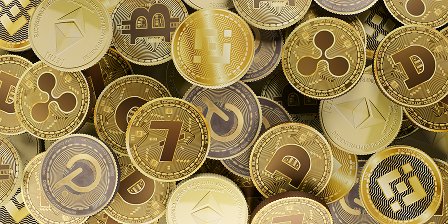What is Mining and How to Make Money Mining Cryptocurrencies?
February 14, 2025
Mining is the process of creating new cryptocurrency units and confirming transactions on the blockchain. It underlies the operation of most decentralized systems such as Bitcoin and Ethereum. For many, this is not just a technological innovation, but a real way to make money. In this article, we will take a detailed look at what mining is, how it works, what ways of earning money are available today, and how training at the PayPilot Academy can help beginners master this promising field.
Mining Basics
What is mining?
Mining is the process of solving complex mathematical problems that confirm transactions and create new blocks in the blockchain chain. For each successfully added block, miners receive a reward in the form of cryptocurrency.
Mining provides:
- Network security. Increasing complexity of tasks makes the system resistant to attacks.
- Decentralization. Miners around the world operate independently, reducing the risk of monopolization.
- Maintaining the functionality of the blockchain.
How does this work?
- Transactions. Users send cryptocurrency and transaction information is posted to the network.
- Block formation. All data is collected into a block, which miners must confirm.
- Solution tasks. Mining computers compete to solve a cryptographic problem. The first one to complete the task receives a reward.
- Adding to the blockchain. The confirmed block is added to the chain and transactions are considered completed.
Mining methods
1. Mining on CPU
Using central processing units (CPUs) for mining was popular in the early days of cryptocurrencies. However, this method is now obsolete, since modern algorithms require much more computing power.
2. GPU mining
Graphics processing units (GPUs) have become the standard for mining most cryptocurrencies. They are more efficient than CPUs, especially for algorithms like Ethash. GPU farms can consist of several powerful video cards, which increases performance.
3. ASIC mining
Specialized ASIC (Application-Specific Integrated Circuit) devices are designed exclusively for mining. They have incredible performance, but their narrow specialization makes them applicable only to certain algorithms.
4. Cloud mining
For those who do not want to invest in equipment, there is the possibility of renting computing power through cloud platforms. This is a less risky method, but it requires caution: there are many scams in this area.
5. Mining on mobile devices
There are applications for mining on smartphones, but their efficiency is extremely low. This is more of an experimental method than a real source of income.
How much can you earn from mining?
Mining income depends on many factors:
- The selected cryptocurrency. For example, Bitcoin mining requires significant investment in equipment.
- Network complexity. The more miners, the more difficult it is to solve problems.
- Equipment cost. Video cards, ASIC devices and electricity make up the bulk of the costs.
- Cryptocurrency price. The cryptocurrency exchange rate greatly affects profitability.
Example: if a farm of several video cards brings in $10 a day at the current exchange rate, then with an increase in the price of cryptocurrency, the income can double or even triple.
Risks and challenges
- High equipment costs. Modern video cards and ASIC devices are expensive.
- Electricity costs. Energy consumption is one of the main expense items.
- Difficulty change. With the growing popularity of cryptocurrencies, the difficulty of mining increases.
- Regulatory restrictions. Some countries ban mining or impose high taxes.
- Wear and tear of equipment. Mining equipment operates at maximum power, which accelerates its wear and tear.
How to start mining?
- Learning the basics. Introduction to how blockchain and algorithms work. Understanding the differences between algorithms, such as SHA-256 (used in Bitcoin) or Ethash (for Ethereum), allows you to choose the right hardware and mining approach. Beginners should also study the principles of operation of nodes, features of reward distribution and factors affecting the difficulty of mining. To get an effective start in mining, it is useful to take training courses, such as those at the PayPilot Academy, which will help you not only understand the technical side of the issue, but also analyze the economic efficiency and risks associated with mining cryptocurrencies.
- Selection of equipment. Decide whether you will use GPU, ASIC or cloud mining.
- Software installation. There are specialized programs for mining, such as NiceHash, CGMiner, PhoenixMiner.
- Cryptocurrency selection. Determine which coin is the most profitable to mine.
- Wallet setup. To receive rewards, you will need a cryptocurrency wallet.
Alternatives to mining
If mining seems too difficult, there are other ways to make money on cryptocurrencies:
- Trading. Buying and selling cryptocurrencies on exchanges.
- Staking. Receiving passive income for storing cryptocurrency.
- Investments. Long-term investment in promising projects.
Mining is not only a method of mining cryptocurrencies, but also an important part of the operation of blockchain systems. This process requires knowledge, investment and a willingness to adapt to changing market conditions. Training at the PayPilot Academy will help you master all the intricacies of mining and avoid common mistakes.
Diving into the world of cryptocurrencies can open doors to new earning and investment opportunities. The main thing is to approach the matter consciously and use proven sources of knowledge.



